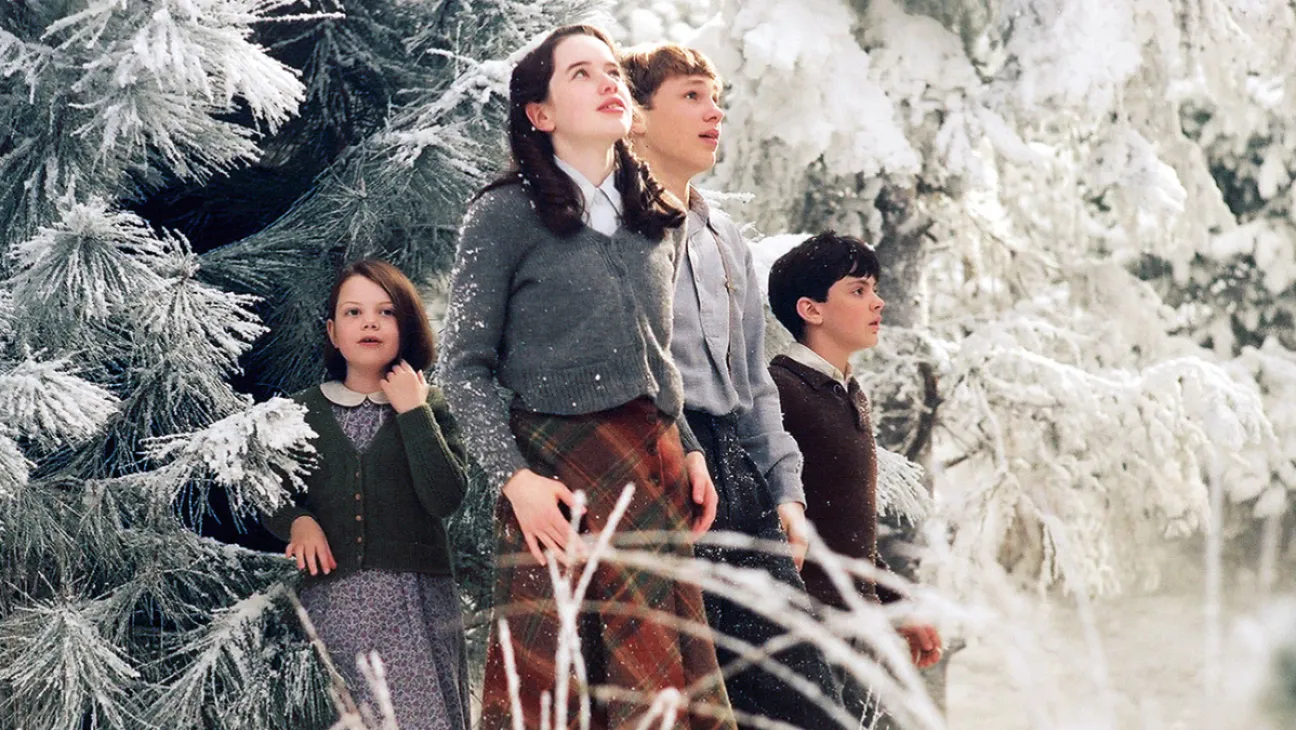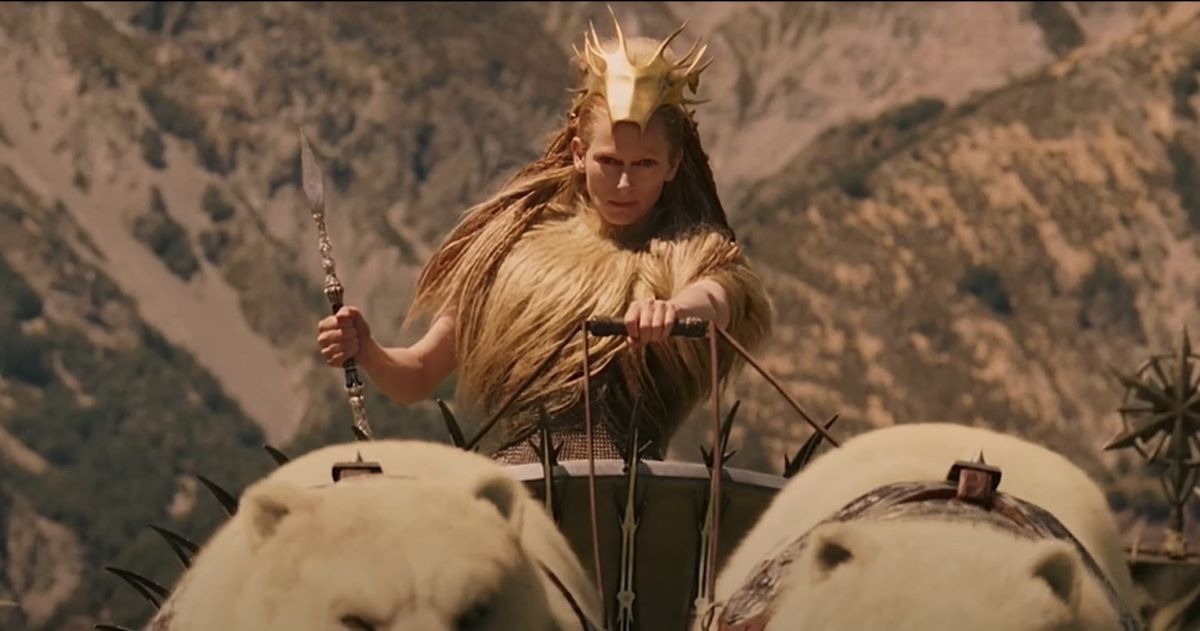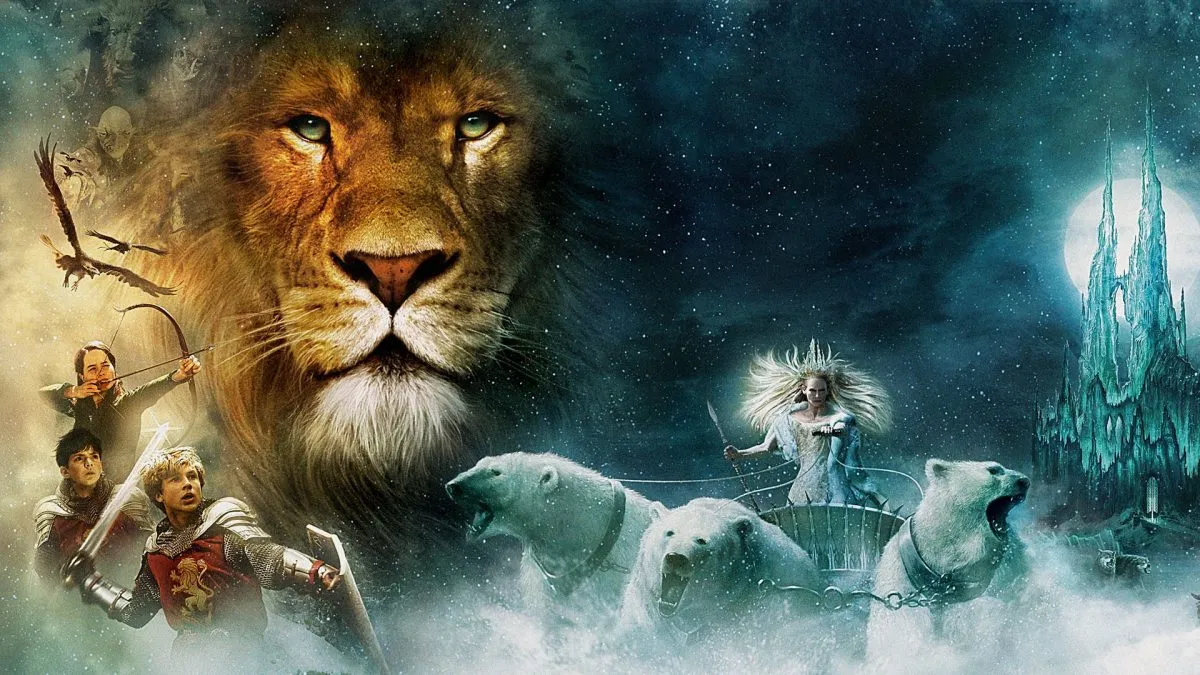Everyone knows how influential J. R. R. Tolkien and his works set in Middle-earth have been in the fantasy genre. But less talked about are the works of C. S. Lewis, author of The Chronicles of Narnia.
That doesn’t mean the story hasn’t been just as impactful in fantasy and fiction. Director Greta Gerwig will be directing at least two Netflix adaptations of The Chronicles of Narnia, a task that she has said she is “terrified of” due to her great love for the series. We’ve also seen other franchises reference the works of Lewis recently, with the Ahsoka season 1 finale being titled “The Jedi, the Witch, and the Warlord” in an obvious reference to Lewis’ most popular book.
All this makes now an excellent time to revisit The Lion, the Witch, and the Wardrobe—both the book and the movie.
Why you should read the book
Much like The Lord of the Rings, The Lion, the Witch, and the Wardrobe has a lot of subtext exploring the long-term effects of war on Great Britain. However, being partially set in the real world also allowed the story to turn that subtext into text. The Pevensies are children of London being sent to the countryside to keep them safe from the Blitz during World War II.
Despite their misfortune, the children work hard to make the best of their situation and eventually travel through a magical wardrobe and into the world of Narnia. Like many children of their generation, they are forced to grow up far too quickly by the world around them. Still, they keep their hope and faith strong and end up being able to help not only themselves but all of Narnia.
Why you should watch the movie
There have been many adaptations of The Chronicles of Narnia, but the one most people remember is the 2005 film. While it was well-received, it’s been seen by many as another one of the The Lord of the Rings knock-off films of the period. However, I think that does the film a disservice; while it would arguably not exist without the success of Jackson’s The Lord of the Rings trilogy, Andrew Adamson’s The Lion, the Witch, and the Wardrobe is a classic in its own right, and should be treated as such.
Updating the story
All of the Pevensie children are given more solid personalities, flaws, and arcs than they received in the book. Peter has to learn that being the eldest doesn’t mean bossing his siblings around, and Susan learns to put her faith in that which she can’t always see. Edmund learns the dangers of trusting strangers and prioritizing wealth over safety, but he is also treated much more sympathetically from the start, being the younger brother who has to live up to Peter’s expectations.
Some of the more sexist language of the book was thankfully taken out of the 2005 film, as well, with Santa Claus instead only saying that he hopes Lucy “never has to use [her knife],” a reasonable hope given that she was only 10 years old.
Great casting and well-acted

It helps that every role was near-perfectly cast and extremely well-acted. Georgie Henley is and always will be Lucy Pevensie for me, Liam Neeson will always be the voice of Aslan, and Tilda Swinton will always be the White Witch. The other child actors are no slouches either—Skander Keynes does an amazing job at making Edmund a well-rounded character.
Beautiful Costumes, Props, and Production Design

The costumes, props, and production design are also gorgeous and carry a lot of visual storytelling. Peter’s sword has the head of Aslan embedded in the pommel, showing how Peter was already a soldier for Aslan long before he met the Lion himself. As eternal winter slowly melts into spring, The White Witch’s crown melts and her gown turns grey, showing how her power over Narnia is fading. By the final fight, she has completely changed her look into a golden crown, with Aslan’s mane around her neck as a final taunt to her “slain” enemy.
A moving score
While clearly influenced by Howard Shore’s score for The Lord of the Rings, the soundtrack remains a standout. The Narnia Lullaby is still a haunting melody with a dark undertone, and The Battle accentuates an already impressive battle sequence.
An epic battle scene
Speaking of which, the Pevensies might be kids in the first film, but the battle scenes are just as intense as they are in The Lord of the Rings. The CGI animals and practical effects used for creatures like the minotaurs are all effects that hold up today (the one exception being Lucy and Susan “riding” on Aslan’s back). Also, don’t forget that Edmund gets stabbed after destroying the White Witch’s wand. He survives, but still—it’s an intense moment.
A particularly interesting thing about the battle scene is that, after being forced to flee his home due to the Blitz, Peter uses similar tactics against his enemy, utilizing the griffins to hail boulders upon the advancing enemy.
As excited as I am to see Greta Gerwig’s take on Narnia, part of me will always compare it to this film and how incredible it was.
(featured image: Walt Disney Studios Motion Pictures)










Published: Oct 6, 2023 05:16 am